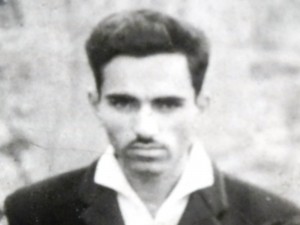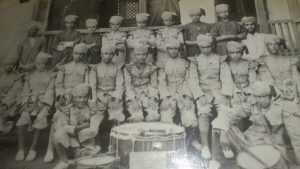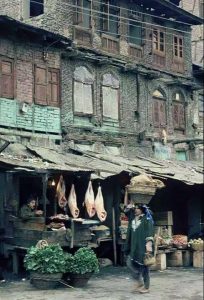Peace Watch » Editor's Take, Featured » Dr. Javid Iqbal’s Review of Downtown Boy
Dr. Javid Iqbal’s Review of Downtown Boy
Srinagar: The City of Resistance and Culture
…measuring the nuances of ZGM’s masterly treatise
Dr. Javid Iqbal
Srinagar, Publish Date: Jan 20 201
 ZGM with his Sunday nostalgia in ‘GK’ touches the sensitive cultural chord of thousands of readers in the length and breadth of vale, particularly of ‘Shahr-e-Khas’ the city of Sultans, otherwise known as ‘Downtown’ the heart of Srinagar. Nostalgia craved for a compilation for posterity in sequential form. The book form of nostalgia is tailor-made to record the distinct cultural hue and tone and tenor of resistance. The stories otherwise known to multitudes given to reading Sunday nostalgia as a matter of habit, assume an endearing tone—selectively and sweetly sequential. ZGM, the master story teller has woven the tale around his own being. Hence, it has the aura of an autobiography; in part it carries the flavour of a fiction. It could fit in quite a few genres of literature.
ZGM with his Sunday nostalgia in ‘GK’ touches the sensitive cultural chord of thousands of readers in the length and breadth of vale, particularly of ‘Shahr-e-Khas’ the city of Sultans, otherwise known as ‘Downtown’ the heart of Srinagar. Nostalgia craved for a compilation for posterity in sequential form. The book form of nostalgia is tailor-made to record the distinct cultural hue and tone and tenor of resistance. The stories otherwise known to multitudes given to reading Sunday nostalgia as a matter of habit, assume an endearing tone—selectively and sweetly sequential. ZGM, the master story teller has woven the tale around his own being. Hence, it has the aura of an autobiography; in part it carries the flavour of a fiction. It could fit in quite a few genres of literature.
The pain of hearing the deafening sound of jackboots in his formative years is a shared pain with scores born and bred in what remains the focal point of vale of Kashmir. ‘Shahr-e-Khas’ is the very core of resistance. The resistance is inborn, DNA linked, glued to a sentiment that survives, in spite of odds being heavy. The abode of sultans, shaped by the majesty of Shuhab-ud-Din, by the grandeur of Zain-ul-Abidin has shown disinclination to imbibe a political order, inconsistent with its cultural ethos. Therein hangs the tale of resistance. ZGM laces historicity with a tale woven of distinct landmarks of city on riverbanks, also, of the people inhibiting it–live characters with distinct features.
ZGM takes a count of the odds down the ages. The odds, he experienced as he grew up, of yester years were related in Grandma’s tales, by other elders in the family, and in the neighborhood. He takes great pains to know, how the city of sultans survived, given the hazards down the centuries of strenuous living. On a deeper understanding of multiplicity of stories, it emerges that ‘Shahr-e-Khas’ has an endearing, in part revered mix of physical landmarks–Koh-e-Maran towering over the city of sultans, Badam We’re with its flavour of almonds in the foothills, Khanqahs of Sheikh Hamza Makhdoom, Naqashband Saheb, Dastgeer Saheb, Bahu-ud-Din Saheb, and Jamia Masjid. These landmarks lend colour to distinct cultural hue and strengthen fibre of resistance. The place retains its shade, faced with social engineering attempted by one alien ruler after another. The social engineering was not innocuous, it had jackboots to manage the change, and the change meant obedience— unswerving obedience. It resulted in sordid happenings—1865, 1924, and the year the long suppressed soul found new voice—1931. ZGM’s stories carry, what was related of these events. Thus, Naqashband Saheb, where the fallen heroes of 1931 lie buried remains for him, a place of pilgrimage. It was steps away from his dwelling; he was born and bred in. 
The stories apart from physical landmarks, relate to men and women as well, shaping the social scenario. Saqa-the waterman with the bag of animal hide watering the road early morning, the line-man, the post-man serving the locality get the accolade, political bigwigs are seen as forces disturbing the tranquillity. Barber shops, the habitats of gossip with barber’s tongue as sharp as his blade is what we identify with, as also with the ‘Shuda’ respected despite his love of cannabis., the lunatic too, endearingly called, ‘Mo’th’. Or, the midwife, who delivers—Wa’ren, the matchmaker—Manzem’yur, incidentally a hermaphrodite, represent a cultural ethos, which in part might be fading with social advancement, however it retains the cultural flavour. The stories related to the live characters remain a part of our folklore, and have a mesmerizing effect.
Distinct cultural hue did not stand in the way of social advancement, as and when it dawned. Islamia School, the school where ZGM was groomed, just as others of his ilk, remains as much of a landmark as the revered shrines. Endearing stories relate to this seat of learning that helped social transformation. Shade away from Islamia School, however a step ahead is Islamia College—ZGM’s Alma-mater, the picturesque university in Nasim Bagh as well—another milestone. Social transformation advances, as does the twin tale of culture and resistance. The storyteller draws on his own inferences, as he grows, apart from the tales, he was fed with. Crossroads—1947/53/58/63/64/65/75 are recounted, also the tale of the towering leader with his triumphs and tragedies. Tragedies galore with one gaffe after another, though there are time periods that provided hope, however short-lived. There are tales of migration, some forced, across the bloody line that changed names, though not its unsavoury character. Post-1947 migrations reminded of similar episodes of earlier centuries forced by blood sucking taxations, famines—some managed, and baigar (forced labour) that led to colonies of Kashmiris in Amritsar, Lahore and Sialkot.
‘Shahr-e-Khas’ the blend of an endearing culture and resistance forced by a political order which is inconsistent with its tradition is a theme, which hardly an author has alluded to; hence ZGM’s treatise is a quality product. It could be a casual reader’s bed side delight, besides filling a scholar interested in some serious study of a place that more often than not sets the trend of how Kashmir shapes up. It forms a must read, irrespective of the price, it carries. The book is published by ‘Gulshan Books’ Residency Road—the prime publishing house of Kashmir.
Yaar Zinda, Sohbat Baqi [Reunion is subordinate to survival]
(Author is doctor in medicine, a social activist, and a senior columnist)
Filed under: Editor's Take, Featured







